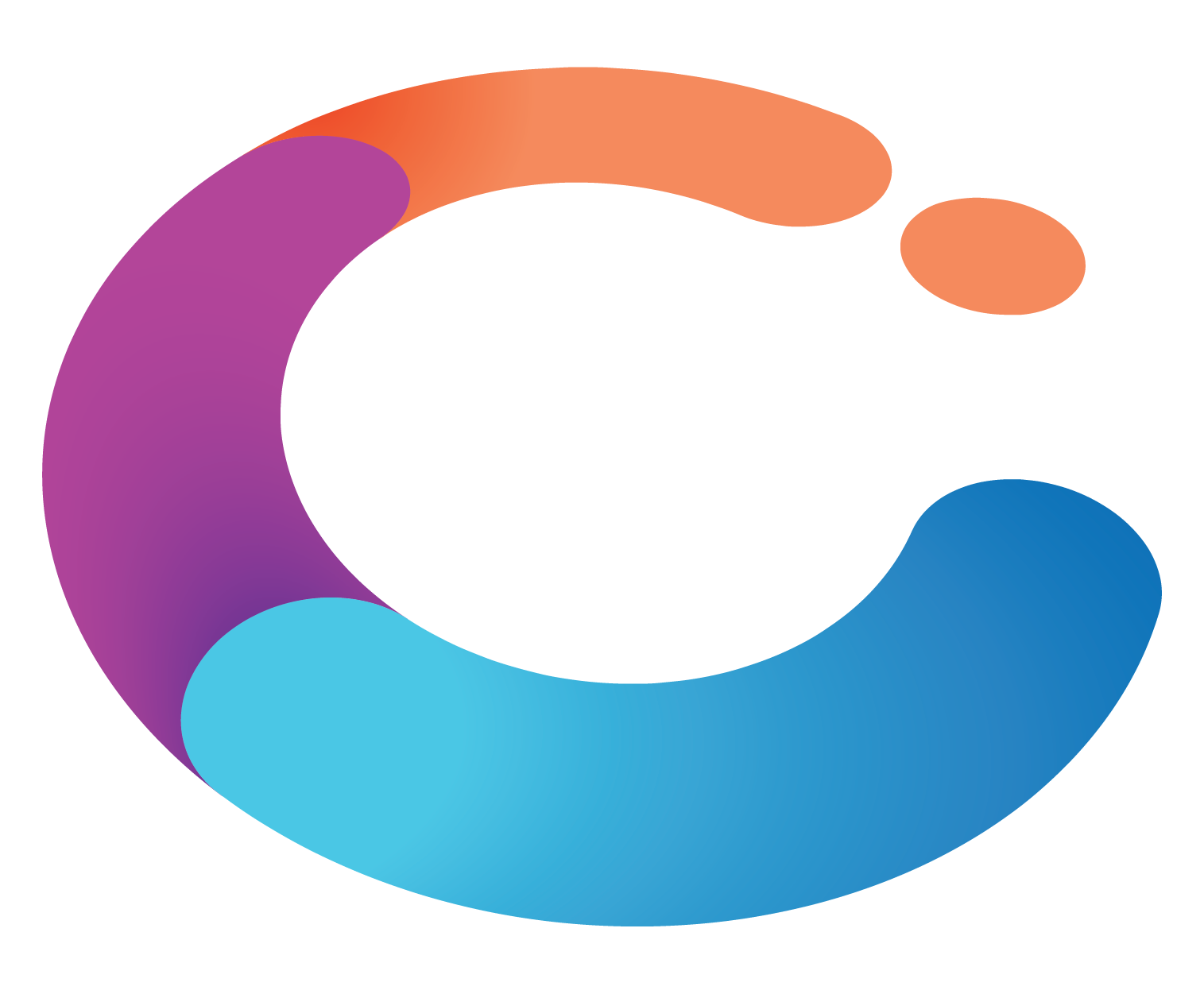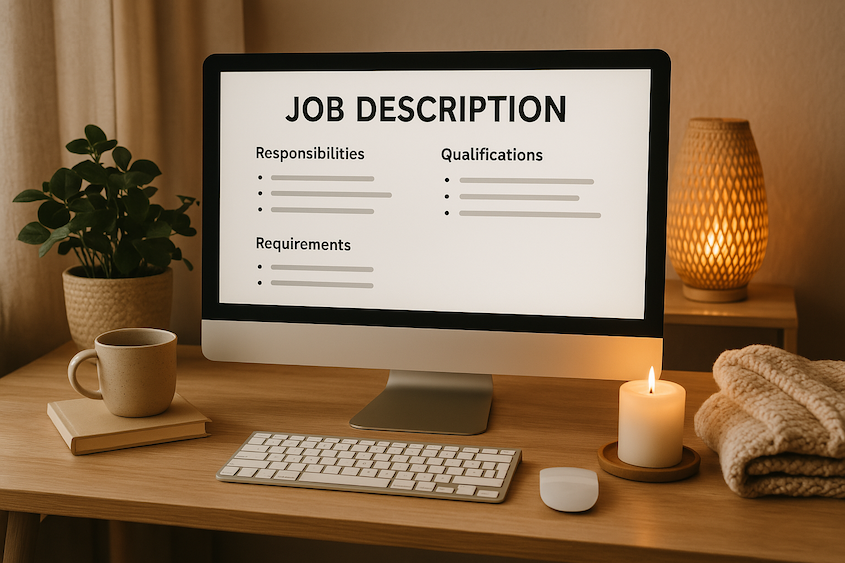Best Practices for LinkedIn Job Ads: Expert Tips for HR Success
Best practices for LinkedIn job ads underscore the significance of clear job titles, engaging summaries, and targeted audience strategies to...
Engage
|
Hire
|
Develop
|
Assure
|
|
Deeply understand your organisation with science-backed analytics on your culture, team design, and engagement. |
Automatically match to candidates who are a great fit for your team culture and who are intrinsically motivated to succeed. |
Back your onboarding, compliance and skill development with industry-leading credentialling, competency and capability expertise.
|
Reimagine skills assessment and certification with dedicated tools designed to elevate your competency frameworks.
|
.png?width=383&height=200&name=team%20(1).png)
14 min read
 Compono
Mar 31, 2025 9:06:14 AM
Compono
Mar 31, 2025 9:06:14 AM

The article outlines best practices for LinkedIn job advertising, emphasising strategies that enhance HR success by leveraging the platform's extensive user base and advanced features. Key insights include:
Collectively, these strategies optimise the hiring process and improve candidate engagement, reinforcing the value of utilising LinkedIn for recruitment.
In modern job advertising, LinkedIn has emerged as a transformative platform, with a user base exceeding 900 million professionals. This platform serves not merely as a digital bulletin board for job openings; it has evolved into a strategic tool for HR professionals, facilitating connections with top talent in a competitive landscape. Currently, 68% of recruiters utilise LinkedIn for sourcing candidates, underscoring the platform's significance.
By leveraging its advanced features, organisations can create targeted job postings and utilise analytics to enhance their recruitment strategies, ensuring they attract the right individuals. As the job market continues to evolve, mastering the effective navigation of LinkedIn will be essential for companies striving to secure the best candidates and cultivate a thriving workforce.
The professional networking site has established itself as a premier platform for job advertising, currently boasting over 900 million users worldwide. This extensive user base, combined with its professional focus, enables companies to effectively target individuals with specific skills and experiences, making it an indispensable resource for HR professionals. In fact, a remarkable 68% of recruiters now rely on this platform for sourcing candidates, underscoring its critical role in modern recruitment strategies.
Notably, the platform generates 277% more leads compared to Facebook and Twitter combined, highlighting its effectiveness as a recruitment tool.
The significance of this platform extends beyond mere job postings; it serves as a powerful networking tool that allows companies to cultivate relationships with potential hires long before a position becomes available. This proactive recruitment approach is vital in today's competitive job market, where top talent is often passive and not actively seeking new opportunities. With 95 job applications submitted every second on the platform, its capability to connect employers with the right individuals is unmatched.
Moreover, the rise of interactive features such as polls and Live has further enhanced engagement and community building on the platform. These features enable companies to effectively showcase their culture and values, which can significantly improve recruitment strategies by attracting individuals who align with the organisation's ethos. As organisations adapt to these changes, leveraging LinkedIn's capabilities alongside Compono's predictive insights will be essential for attracting and retaining top talent in 2025 and beyond.
Compono's technology, which employs predictive insights to align individuals most likely to succeed, can assist HR professionals in optimising the recruitment process and enhancing workforce management. Additionally, Compono's learning and development management solutions ensure that new hires are not only a fit for the role but also have the opportunity to grow and thrive within the organisation.
As Joanna Plohl, Group HR Manager, noted, "This enables us to look beyond our industry to find quality candidates who have transferable skills and fit right in." This perspective emphasises the platform's importance in sourcing diverse talent, particularly when paired with Compono's science-backed insights.
In summary, the platform's role in LinkedIn job advertising is not just significant; it is transformative. By embracing this platform and integrating Compono's innovative HR solutions, HR professionals can implement successful recruitment strategies that align with the evolving landscape of talent acquisition, supported by its global reach and diverse user demographics.
LinkedIn job advertising presents a suite of powerful features designed to optimise recruitment, establishing it as an essential tool for HR professionals in 2025. Targeted job postings are among the standout features, enabling companies to reach specific demographics based on skills, location, and industry. This precision ensures that job ads are displayed to the most suitable candidates, significantly increasing the chances of attracting top talent.
In addition to targeted postings, the platform offers advanced search filters that empower recruiters to refine their applicant searches effectively. These filters facilitate a more customised approach, ensuring that individuals viewing the job postings are not only qualified but also aligned with the company’s culture and values.
The platform's analytics tools further enhance the job advertising process by delivering valuable insights into the performance of job postings. HR teams can utilise these analytics to make data-driven decisions, adjusting their strategies based on real-time feedback. For example, understanding which demographics engage most with job ads can inform future postings and improve overall effectiveness.
Moreover, LinkedIn's seamless integration with applicant tracking systems (ATS) streamlines the application process. This integration simplifies the experience for applicants, making it easier for them to apply, while also enabling recruiters to manage submissions more efficiently. Consequently, organisations can reduce time-to-hire and enhance the overall candidate experience.
Effective ATS platforms like Compono Hire also make the job posting experience seamless, with job templates and multi-posting to LinkedIn and hundreds of other job boards.
With 77% of individuals who recently changed jobs using LinkedIn to find new opportunities, its potential for visibility and engagement is substantial. However, it is noteworthy that only about 3 million users post content weekly, representing just 1% of the 260 million monthly active users. This indicates a significant opportunity for companies to distinguish themselves in a less crowded space by effectively utilising LinkedIn job advertising features.
In summary, leveraging LinkedIn job advertising together with its targeted job postings, advanced search filters, and analytics tools, in conjunction with Compono's structured hiring process and personality assessments, can dramatically enhance recruitment efforts. This ensures that HR teams not only attract the right candidates but also make informed decisions that align with their organisational goals. The rapidly changing work landscape necessitates aligned and productive teams; however, many companies continue to make poor people decisions due to outdated models and biases.
Compono's approach brings science and strategy to the forefront, assisting organisations in transforming their recruitment processes and improving overall performance and culture.
HR professionals frequently encounter pitfalls when engaging in LinkedIn job advertising, which can significantly affect their recruitment efforts. One prevalent mistake is the use of vague job titles and descriptions. Such ambiguity can confuse potential applicants, leading to misalignment between job requirements and their expectations.
Studies indicate that vague job descriptions can reduce applications by up to 30%, underscoring the importance of clarity in communication.
Another common error is the omission of critical information, such as salary ranges and benefits. Candidates increasingly prioritise transparency regarding compensation, and failing to provide this information can deter top talent from applying. Research shows that job postings that include salary details receive 50% more applications than those that do not.
Additionally, neglecting to optimise job postings for search engines can severely limit visibility. With more than 77% of mid-sized businesses acknowledging HR as a strategic function, it is crucial to ensure that job advertisements are easily found by potential applicants. This includes using relevant keywords and phrases that align with the skills and qualifications sought.
Moreover, the tone of the job advertisement plays a crucial role in attracting applicants. Overly formal language can alienate potential applicants, while a conversational tone can create a more inviting atmosphere. This approach not only mirrors the organisational culture but also resonates with individuals seeking a more personal connection.
Highlighting social impact initiatives can also attract individuals aligned with the company's values, further enhancing the appeal of job postings. Lastly, many HR professionals overlook the value of LinkedIn's analytics tools. By failing to assess the performance of job postings, organisations miss out on valuable insights that could inform future recruitment strategies.
Regularly reviewing metrics such as click-through rates and application conversions can lead to continuous improvement in job advertising practices.
This data, coupled with Compono's hiring analytics, can help identify where LinkedIn is performing overall amongst all your job boards.
In summary, avoiding these common mistakes—vague descriptions, lack of transparency, poor optimisation, formal language, and neglecting analytics—can significantly enhance the effectiveness of LinkedIn job advertising, ultimately leading to better hiring outcomes. Given that LinkedIn job advertising is considered 227% more effective than other advertising platforms, prioritising effective lead generation on this platform is crucial for HR success.
To create compelling job descriptions, begin with a clear and engaging job title that accurately reflects the role. This clarity is essential, as job titles significantly influence applications; a well-defined title can lead to a higher volume of qualified applicants. Follow the title with a concise summary that outlines the key responsibilities and expectations of the position.
Utilising bullet points improves readability and enables prospective applicants to swiftly review the description for crucial information.
Emphasising your organisational culture and values is essential in attracting individuals who align with your mission. Compono's science-backed insights can help you map your company culture effectively, ensuring that your job descriptions reflect the values that matter most to your organisation. This connection can be a deciding factor for many applicants.
Incorporate specific keywords related to the role in your LinkedIn job advertising to improve searchability and ensure your posting reaches the right audience.
Additionally, including a call to action encourages applicants to apply, fostering a sense of urgency and engagement. It’s also essential to use inclusive language that avoids jargon, making the description accessible to a diverse range of applicants.
Best practices suggest that job posts should be concise yet informative; while longer posts (601+ words) can yield slightly more applications per view, clarity and brevity are generally more effective. Remember, 68% of hiring managers would reject an applicant due to a poorly written education section, underscoring the importance of precision in every aspect of your job description. By following these strategies, you can craft job postings that not only attract the right talent but also reflect the values and culture of your organisation.
Additionally, utilising Compono's innovative HR solutions, such as personality assessments and talent profiling, can improve job fit and employee engagement, ensuring that applicants align well with your organisational culture. These assessments offer insights into individuals' work personalities, assisting HR managers in recognising those who have the transferable skills essential for success in your organisation. As Joanna Plohl, Group HR Manager, states, "This enables us to look beyond our industry to find quality candidates who have transferable skills and fit right in."
Structured approaches, as discussed in performance management systems, can lead to better hiring outcomes, reinforcing the importance of aligning applicants with your company culture. Explore Compono's platform to optimise your hiring process and find the best fit for your team.

Targeting the right audience on the platform is essential for effective job advertising. By utilising the platform's advanced targeting options, HR professionals can filter applicants based on specific skills, job titles, and industry experience. This precision enables the formation of audience segments that closely match the ideal profile, considering factors such as location, education, and professional interests.
Moreover, leveraging LinkedIn's Matched Audiences feature allows for the retargeting of users who have previously interacted with your business. This strategy enhances the visibility of job postings through LinkedIn job advertising and significantly increases the chances of attracting individuals who are genuinely interested in your organisation. In fact, companies that implement these targeted approaches see a marked improvement in engagement rates, with 77% of mid-sized companies recognising HR as a strategic function rather than merely administrative.
To maximise recruitment efforts, it is crucial to regularly review and adjust targeting strategies for LinkedIn job advertising based on performance metrics. This iterative process ensures that job advertisements remain relevant and effective, ultimately leading to better hiring outcomes. As the demand for talent continues to grow, especially with a 40% year-over-year increase in advertiser demand on the platform, utilising these audience segmentation strategies will be crucial for success in 2025 and beyond.
Additionally, with 94% of B2B marketers utilising the platform to distribute content, its relevance and effectiveness in reaching the right audience cannot be overstated.
The recent case study showing LinkedIn's revenue growth of 8% in early 2024 further validates the platform's effectiveness and the increasing investment opportunities for businesses utilising its advertising solutions.
Incorporating visuals into job postings is essential for maximising their impact. High-quality images, infographics, and videos that authentically represent your organisational culture and values significantly enhance engagement. Visuals not only capture attention but also convey information more effectively than text alone.
For instance, a short video showcasing employee testimonials or a glimpse into a typical day at your organisation offers candidates deeper insight into the work environment.
Moreover, consistency in branding across all visual elements is crucial. This cohesive approach reinforces your organisation's identity and makes job postings more memorable in a competitive landscape. Research indicates that 77% of mid-sized companies view HR as a strategic function, highlighting the importance of effective recruitment marketing strategies.
By leveraging visuals, organisations can attract individuals who align with their brand values and culture, ultimately leading to better hiring outcomes.
The JobViz case study illustrates the effectiveness of innovative visual strategies in LinkedIn job advertising. By utilising coordinated visualisations, JobViz enhances job search efficiency through three levels of presentation:
User interviews and evaluations demonstrate that this approach not only enhances the applicant experience but also positions organisations as innovative employers.
As younger workers increasingly prefer visual communication—being twice as likely as baby boomers to engage with images and videos—adapting job postings to include compelling visuals is not just beneficial; it’s essential for attracting top talent in 2025 and beyond. By prioritising visuals and branding in recruitment marketing, companies can create job postings that resonate deeply with potential candidates, fostering a stronger connection from the outset.

Utilising the analytics tools of the platform is essential for effectively measuring the success of job postings. By tracking key performance indicators (KPIs) such as click-through rates (CTR), application rates, and engagement metrics, HR professionals can gain valuable insights into the performance of their job ads. The platform provides detailed analytics that reveal the demographics of users engaging with your posts, enabling you to assess whether you are effectively reaching your target audience.
Regular analysis of this data is crucial for identifying trends and pinpointing areas for improvement. For instance, if a specific job posting is underperforming, consider revising the job description, adjusting targeting parameters, or enhancing visuals based on the insights gathered.
When you add the analaytics of Compono's ATS, Hire, you get full insights in time-to-hire and where LinkedIn sits in the overall success of your hiring strategies and job boards - so you know where to invest your time and dollars.
This iterative approach not only refines your recruitment strategies but also ensures they remain aligned with your hiring goals.
Moreover, utilising the native analytics tool of the platform provides essential metrics for monitoring individual profiles and company pages, offering insights into engagement rates and content effectiveness. While useful for basic tracking, it may lack advanced features for comprehensive campaign analysis, as highlighted in the case study on Native Analytics, which shows that users often need to explore third-party tools for deeper insights. The cost of £25 per profile for multi-seat business plans on Shield exemplifies the investment in analytics tools necessary for effective recruitment.
Incorporating Compono's predictive insights can further enhance this process by matching you with individuals who are most likely to succeed, allowing HR managers to make data-driven decisions that align with their organisational goals. Compono's predictive insights provide functionalities like sophisticated applicant matching algorithms and customised suggestions based on organisational requirements, addressing the deficiencies noted in LinkedIn's analytics tools. As Luciana Nițu, a growth marketer, aptly puts it, "SEO is my religion and Social Media is my playground."
This sentiment underscores the importance of a data-driven mindset in recruitment. By adopting such an approach and continuously optimising your job postings, you can significantly enhance your recruitment outcomes in 2025 and beyond, aligning with Compono's philosophy of understanding individual strengths and creating suitable work environments.
As we look ahead, several key trends are poised to redefine LinkedIn job advertising. The integration of AI-driven recruitment tools, such as those offered by Compono, is set to revolutionise how HR professionals leverage LinkedIn job advertising to target and personalise job ads. This innovation significantly enhances their ability to connect with the right candidates. This shift is underscored by the fact that 77% of mid-sized businesses now view HR as a strategic function, highlighting the urgent need for innovative approaches in talent acquisition.
Moreover, the growing emphasis on employer branding will compel organisations to invest more in effectively showcasing their culture and values within LinkedIn job advertising. Candidates increasingly expect transparency regarding workplace environments, making it essential for organisations to communicate their unique cultures clearly.
Video content is anticipated to gain traction as a dynamic medium for engaging potential candidates, allowing companies to convey their messages more vividly and authentically. Additionally, with remote work becoming a staple in job searches, organisations must adapt their LinkedIn job advertising to emphasise flexibility and work-life balance, catering to the evolving preferences of job seekers.
Staying abreast of these trends will be essential for HR professionals aiming to attract top talent through LinkedIn job advertising in an increasingly competitive job market. By leveraging innovative strategies, including Compono's science-backed insights and predictive matching capabilities, HR leaders can ensure they remain at the forefront of effective recruitment practices.
Furthermore, Compono's comprehensive workforce management solutions, which include employee engagement and compliance features, empower organisations to make informed decisions about their people, ultimately leading to better business outcomes. The rapidly changing work landscape demands aligned and productive teams, and Compono's solutions are designed to meet these challenges head-on. By embracing these advancements, HR leaders can ensure they remain at the forefront of effective recruitment practices.
In the dynamic landscape of job advertising, LinkedIn emerges as a pivotal platform for HR professionals aiming to connect with top talent. With over 900 million users, its capacity to facilitate targeted job postings and utilise advanced analytics is unparalleled. The integration of tools like Compono enhances this experience, enabling organisations to refine their recruitment strategies and attract candidates who not only possess the required skills but also align with the company culture.
Understanding and avoiding common pitfalls—such as vague job descriptions and lack of transparency—can significantly enhance the effectiveness of job postings. By crafting clear, engaging job titles and descriptions that resonate with potential applicants, companies can improve their visibility and appeal. Moreover, employing visuals and establishing a strong employer brand can further differentiate job postings in a competitive market.
Looking ahead, embracing future trends such as AI-driven recruitment, enhanced employer branding, and the incorporation of video content will be crucial for success on LinkedIn. HR professionals must remain agile, adapting their strategies to meet the evolving preferences of job seekers, particularly in a landscape increasingly defined by remote work and flexibility.
Ultimately, mastering the art of LinkedIn job advertising is essential for organisations striving to build a robust workforce. By leveraging the platform's capabilities and integrating innovative solutions, companies can not only attract the right talent but also cultivate an environment where employees can thrive and contribute to long-term success.
What is the significance of LinkedIn in job advertising?
LinkedIn has established itself as the premier platform for job advertising, with over 900 million users worldwide. Its extensive user base and professional focus allow companies to effectively target individuals with specific skills and experiences, making it essential for HR professionals.
How do recruiters utilise LinkedIn for sourcing candidates?
Approximately 68% of recruiters rely on LinkedIn for sourcing candidates, highlighting its critical role in modern recruitment strategies.
How does LinkedIn compare to other platforms in generating leads?
LinkedIn generates 277% more leads compared to Facebook and Twitter combined, demonstrating its effectiveness as a recruitment tool.
What proactive recruitment approach does LinkedIn facilitate?
LinkedIn allows companies to cultivate relationships with potential hires long before a position becomes available, which is essential in a competitive job market where top talent is often passive.
How many job applications are submitted on LinkedIn, and what does this indicate?
There are 95 job applications submitted every second on LinkedIn, showcasing its unmatched capability to connect employers with the right individuals.
What interactive features does LinkedIn offer to enhance engagement?
LinkedIn includes interactive features such as polls and Live sessions, which help companies showcase their culture and values, improving recruitment strategies.
How can Compono's technology assist HR professionals?
Compono's technology employs predictive insights to align individuals most likely to succeed in roles, optimising the recruitment process and enhancing workforce management.
What is the importance of Compono's learning and development management solutions?
These solutions ensure that new hires not only fit the role but also have opportunities to grow and thrive within the organisation.
What advantages do targeted job postings on LinkedIn provide?
Targeted job postings allow companies to reach specific demographics based on skills, location, and industry, significantly increasing the chances of attracting top talent.
How do advanced search filters on LinkedIn benefit recruiters?
Advanced search filters enable recruiters to refine their applicant searches effectively, ensuring that candidates are not only qualified but also aligned with the company’s culture and values.
What role do analytics tools play in LinkedIn job advertising?
Analytics tools provide valuable insights into job posting performance, allowing HR teams to make data-driven decisions and adjust strategies based on real-time feedback.
How does LinkedIn integrate with applicant tracking systems (ATS)?
LinkedIn's integration with ATS streamlines the application process, simplifying the experience for applicants and enabling recruiters to manage submissions more efficiently.
What percentage of individuals who recently changed jobs used LinkedIn?
77% of individuals who recently changed jobs used LinkedIn to find new opportunities, indicating its substantial potential for visibility and engagement.
How can companies distinguish themselves on LinkedIn?
With only about 3 million users posting content weekly, companies have the opportunity to stand out in a less crowded space by effectively utilising LinkedIn's job advertising features.
What is the overall impact of integrating LinkedIn job advertising with Compono's solutions?
Integrating LinkedIn job advertising with Compono's structured hiring process and personality assessments can dramatically enhance recruitment efforts, ensuring HR teams attract the right candidates and make informed decisions aligned with organisational goals.

Best practices for LinkedIn job ads underscore the significance of clear job titles, engaging summaries, and targeted audience strategies to...

The article focuses on the essential functions and concepts within Human Resources (HR) critical for fostering a productive work environment. It...

Job descriptions serve as formal documents that delineate the essential functions, responsibilities, and qualifications for specific positions. They...

To effectively post job ads on LinkedIn, HR managers should implement a structured process that encompasses:

To create an effective job duties description, it is essential to:

Effective interview questions are essential for evaluating candidates' qualifications, thought processes, and cultural fit. By focusing on...